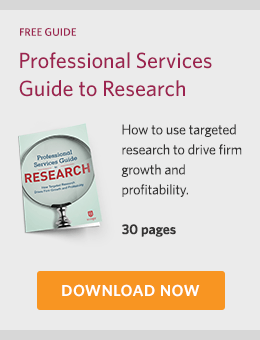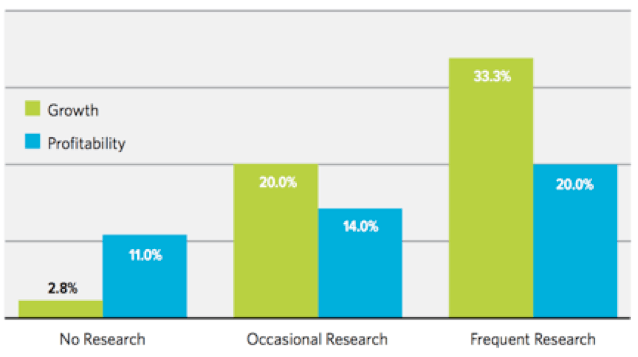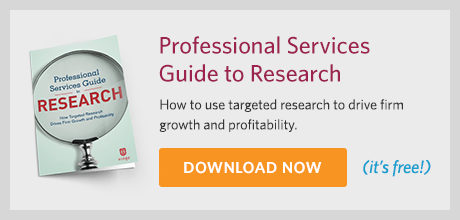Without a doubt, differentiation is the foundation of a solid brand. Particularly within the AEC industry, a differentiated brand can help tip the scales in favor of your firm over another. However, firms often find themselves falling prey to their own misperceptions about their audiences’ priorities. The best way to address this is through internal and external brand research.
But while engaging in brand research may be a natural choice for some AEC firms (because, honestly, which of you isn’t hiring the “best talent” and delivering their projects “on time and on budget”?), it’s the execution that can cause confusion. Hesitation often arises in the form of a few common questions: how is a sample size determined? Are the responses reliable? How sure are you that this data is accurate?
Change is hard, but failure to adapt is fatal
At the heart of these questions is the perception that professional services marketing is little more than abstract—and unprovable—art. Modern marketing has come quite a long way over the years, but much of the thought surrounding it is mired in preconceived notions. Rarely in the past had marketing been considered a science at all…let alone within the professional services realm.
Firm leadership can be a major contributing factor to the prevalence of these misconstrued views. Rigid constructs and resistance to change? These were borne of the era when marketing was little more than placing advertisements and business development was strictly limited to face-to-face interactions.
 It was very difficult to calculate ROI from marketing activities, and as a result, marketing often took a backseat to more measurable efforts. The influx of less seasoned professionals into the AEC industry means firms rely more on technology. For many firms, it’s also resulted in a business development approach that values online networking as much, if not more, than its more traditional counterpart.
It was very difficult to calculate ROI from marketing activities, and as a result, marketing often took a backseat to more measurable efforts. The influx of less seasoned professionals into the AEC industry means firms rely more on technology. For many firms, it’s also resulted in a business development approach that values online networking as much, if not more, than its more traditional counterpart.
Hinge has conducted extensive research in the intersection of psychology and technology to answer questions surrounding buying behaviors within the AEC and other professional services industries. We’ve combined data-driven decision making with practical professional services marketing experience as a hallmark of our own brand and value proposition. The result is insightful strategy that helps deliver better results and greater value to our clients.
Quantitative versus qualitative research
Indeed, the scientific method can be applied to professional services marketing, but what does any of this have to do with brand research?
The Impact of Research on Growth and Profitability

In-depth brand research reduces the risk AEC firms must bear when making critical decisions that impact overall growth. Plus, firms that conduct frequent research grow 3 times faster and are twice as profitable as firms that do not conduct brand research at all. So whether a firm is looking to refine its differentiators, introduce new services or expand its market share, brand research is the way to go.
Now, let’s meander back towards the questions posed earlier by reviewing the concepts of quantitative and qualitative research.
- Quantitative research is the use of empirical investigation—typically of large randomized samples—whose findings can be both expressed and manipulated numerically to the estimate behavior of a larger population.
- Qualitative research methods involve the use of vehicles like in-depth interviews of a selected group or group(s) to reveal target audiences’ range of behavior and perceptions with regard to specific topics.
SEE ALSO: New Research Uncovers Biggest Business Challenges in AEC
Within brand research, a qualitative approach can sometimes be viewed as “less scientific” given the smaller sample size and lack of numerical data to support overall conclusions. At the same time, qualitative research can provide a greater depth of insights via the open-ended nature of responses. With brand research, the verbatim responses to an interview question afford a deeper understanding than a data point alone.
None of this discussion should be misconstrued to discount the benefit of quantitative research. Hinge is home to more than a few stats nerds that revel in the world of confidence intervals and data analysis (this post’s author included).
The beauty of quantifiable data is the perceived absolute: that a particular amount of certainty can be guaranteed. Larger sample sizes=greater data reliability. It seems more direct and realistic than more interpretive methods.
Real results, demystified
When conducting brand research, it’s best to partner with market researchers who combine both approaches in a way that paints a more complete picture for your firm. A typical engagement at Hinge involves a predetermined number of external phone interviews, inclusive of clients, prospects, and gotaways, complemented by internal (employee) interviews administered via online survey.
External respondents are asked a mixture of open-ended (qualitative) and quantitative questions. Responses to one type of question are used to clarify the other flavor, and vice versa. The overall results are numerically tabulated, with answers to the open-ended questions included in the reporting and highlighted in support of selected quantitative data.
Maintaining the edge
Brand research plays a significant role in marketing professional services, particularly within the highly competitive AEC industry. The ability to identify actions that can deliver the most impact, provide the greatest value, and maximize firm profitability is invaluable.
Consider these steps to get the most out of your research and differentiation efforts:
- Ensure that your brand research balances the quantitative with the qualitative.
- Be open to facing the hard truths that can arise from research insights.
- Engage a marketing partner that has a truly scientific approach to professional services marketing. (It matters.)
Additional Resources:
- Get a copy of our free Marketing Planning Guide to develop a strategy that generates more leads for your firm by building its visibility and reputation in the marketplace.
- Dive into Hinge’s own research into what motivates professional services buyers in the free book, Inside the Buyer’s Brain.
- Discover what combination of tools and techniques—online and offline—produce greater visibility, expanded reach, more leads, and higher revenues in the Visible Expert® course through Hinge University.
How Hinge Can Help:
Hinge is a global leader in helping professional services firms grow faster and become more profitable. Our research-based strategies are designed to be implemented. In fact, our groundbreaking Visible Firm® program combines strategy, implementation, training and more.

